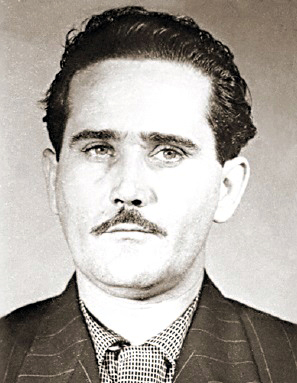
Havana ephemeris. 3rd of July.
1915. Juan Manuel Márquez is born in the area of Santa Fe, in Havana.

He was a Cuban revolutionary, with a long political history. He stood out for being a man of action and thought, who advocated from his youth for the realization of the revolution.
In the territory of the municipality of Marianao he develops a large part of his political life. His streets keep innumerable memories and anecdotes of his battle, which have made him worthy of being recognized as a distinguished patriot of this territory.
He was second in command of the Granma yacht expedition. A total of 82 expeditionaries led by Fidel Castro left the Mexican port of Tuxpan for Cuba aboard the small yacht Granma at dawn on November 25, 1956. After a seven-day journey, they arrived and landed on the southeastern coast of Cuban territory. , by a place near Las Coloradas Beach, on December 2, 1956.
On December 5, the group of revolutionary combatants was unexpectedly attacked by soldiers of the dictatorship in the area of Alegría de Pío. This caused the dispersion of the expeditionaries. Juan Manuel Márquez was traveling through the eastern part of Cuban territory.
On the 15th he was captured and viciously murdered.
1957. Adolfo Domingo De Guzmán Luque, known as Adolfo Luque, dies in Havana.

Since he was a child he liked to practice baseball and started in this sport playing third base for Club Vedado. He was short in stature, white-skinned, which is why his face was almost always red, with a thick voice and an energetic character. He was a great baseball player, coach and director of several teams both in Cuba and abroad, for which all the players obeyed him because of the prestige he earned.
In Cuba he played as a professional since 1912, the year in which he debuted at third base with the team identified as Fe. In the Cuban League as a pitcher in total he obtained 93 wins against 62 setbacks until the moment he pitched his last game in the league. 1938-1939 season with the Almendares team.
Adolfo Luque, who had a strong temperament, was nicknamed "Perfect Havana" by North American journalists.
In the United States he always made his defense of the Cuban identity evident. Usually in his daily life he wore a straw hat, rancher pants, guayabera and a "habano".
He entered the Major Leagues in 1914 with the Boston Braves. He was a pitching champion in 1923 with the Cincinnati Reds. Later he joined other Major League teams, in which he remained until 1935. He retired in 1936 from active sports, but became a pitching coach, because given his experience and dedication he was hired by the Giants team, until 1945.
Of his work as a pitcher, it has been affirmed that he was a great pitcher not only because of his Herculean arm, but also because he had a prodigious retention to keep in mind the virtues and defects of the hitters he faced.
In the auditorium of the Latin American Stadium there is a bust that perpetuates his memory.
His birth took place in Havana on August 4, 1890.